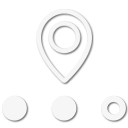Doing a little research on creating my own Kaolin impregnated gauze and stuffing and thought I'd come stimulate this interesting topic on here. I've been investigating using half parts clay and cayenne pepper (for it's clotting and antiviral/bacterial properties) Anyone use their own mix, or have their own procedure?
Quickclot and clox has become much cheaper lately, but I'm looking for an easily renewable and self sufficient way of making this stuff for ifak's and med bags. And I enjoy doing things like this and resisting the main stream, so it works for me.
Also, what other pieces of kit do you swear by on your traveling first aid pack? Do you include minor sickness stuff as well, trauma based, orthopedics, medications?
Quickclot and clox has become much cheaper lately, but I'm looking for an easily renewable and self sufficient way of making this stuff for ifak's and med bags. And I enjoy doing things like this and resisting the main stream, so it works for me.
Also, what other pieces of kit do you swear by on your traveling first aid pack? Do you include minor sickness stuff as well, trauma based, orthopedics, medications?










